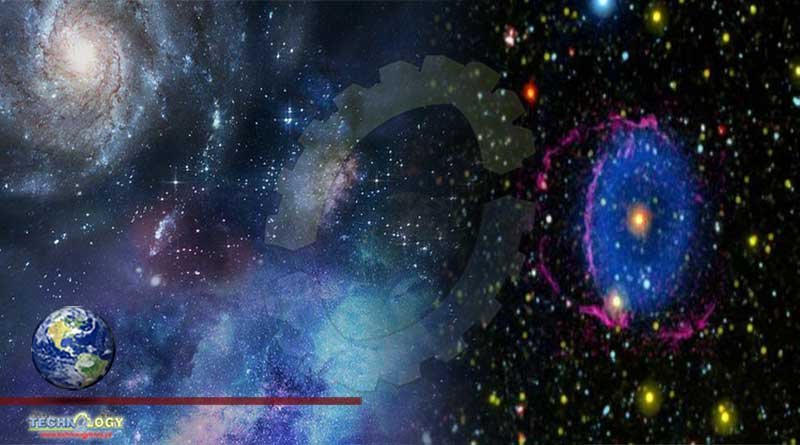The Blue Ring Nebula, which has perplexed astronomers for a decade, appears to be the youngest known example of two stars merged.

The so-called Blue Ring Nebula, which has perplexed astronomers for a decade and a half, appears to be the youngest known example of two stars merged.
In a paper in Nature, a team of scientists, including members of the team that first observed a ring around the star TYC 2597-735-1, suggests it is actually the base of a cone-shaped cloud of fluorescing debris formed after a Sun-like star engulfed a smaller companion.
The story began in 2004, when scientists with NASA’s then space-based Galaxy Evolution Explorer (GALEX) spotted a large, faint blob of gas. Subsequent observations revealed a thick ring structure within it.
The blob was similar in size to a supernova remnant or a planetary nebula but had a living star at its centre. And while supernova remnants and planetary nebulas radiate in multiple wavelengths outside the UV range, further research showed the Blue Ring Nebula did not.
More than a decade later, scientists and citizen scientists had gathered data from four space telescopes and four ground-based telescopes, as well as historical observations of the star going back to 1895, but were no closer to an answer.
That came, Hoadley says, when they realised that rather than looking for new data they needed new ways to make sense of existing data.
To help make that happen, they called in theoretical astrophysicist Brian Metzger from Columbia University, who develops mathematical and computational models of cosmic phenomena, which can be used to predict how those phenomena will look and behave.
“It wasn’t just that Brian could explain the data we were seeing; he was essentially predicting what we had observed before he saw it,” says Hoadley. “He’d say, ‘If this is a stellar merger, then you should see X’, and it was like, ‘Yes! We see that’.”
The team concluded that the nebula was the product of a relatively fresh stellar merger that likely occurred between a star similar to our Sun and another star only about one-tenth that size. Nearing the end of its life, the bigger star began to swell, creeping closer to its companion. Eventually, the smaller star fell into a downward spiral toward its larger companion.
Along the way, the larger star tore the smaller star apart, wrapping itself in a ring of debris before swallowing the smaller star entirely. This was the violent event that led to the formation of the Blue Ring Nebula.
The merger launched a cloud of hot debris into space that was sliced in two by the gas disc, and this created two cone-shaped debris clouds.
The Blue Ring Nebula consists of two expanding cones of gas ejected into space by a stellar merger. Credit: NASA / JPL-Caltech / M Seibert (Carnegie Institution for Science) / K Hoadley (Caltech) / GALEX Team
Originally published at Cosmos Magazine
